Driven by a remarkable image I saw on instagram, I clicked on every link Google offered for my search of Italian designer Lino Schenal. The seven Google pages yielded nil information about the visionary designer smitten with polystyrene (Styrofoam) in the 1970s. He clad his entire house in Rome with it, carving an undulating storage wall in his kitchen, furniture, lighting, and sculptural walls throughout. Late Italian interior photographer Carla de Benedetti’s website yields 12 images of Schenal’s home in 1970. But I could find nothing about Schenal’s work, age, provenance, impact…
I was inspired by the artful vision Schenal applied to the cheap, ubiquitous material, and his very practical, do-able applications, like this sofa…
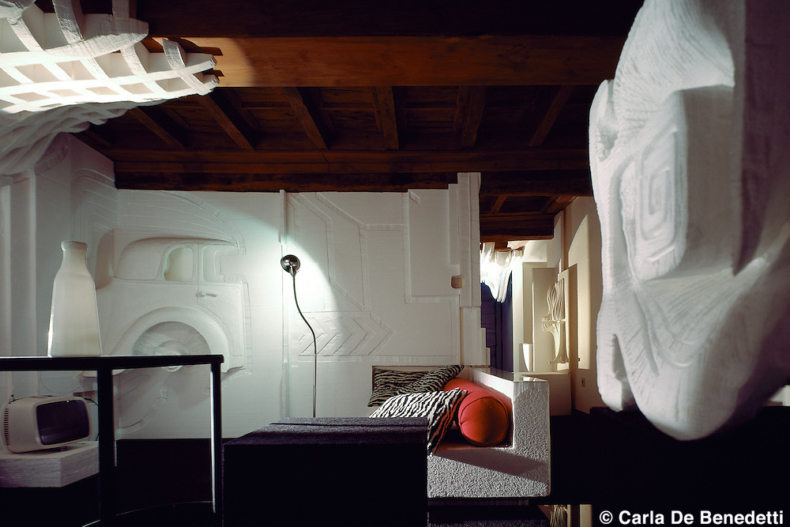
…and table base…
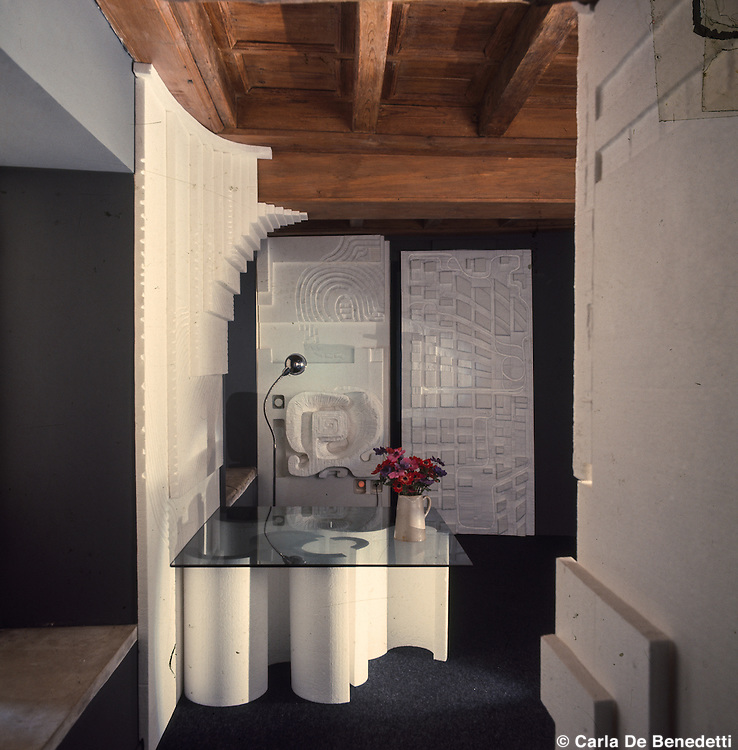
…and bathroom shelves…
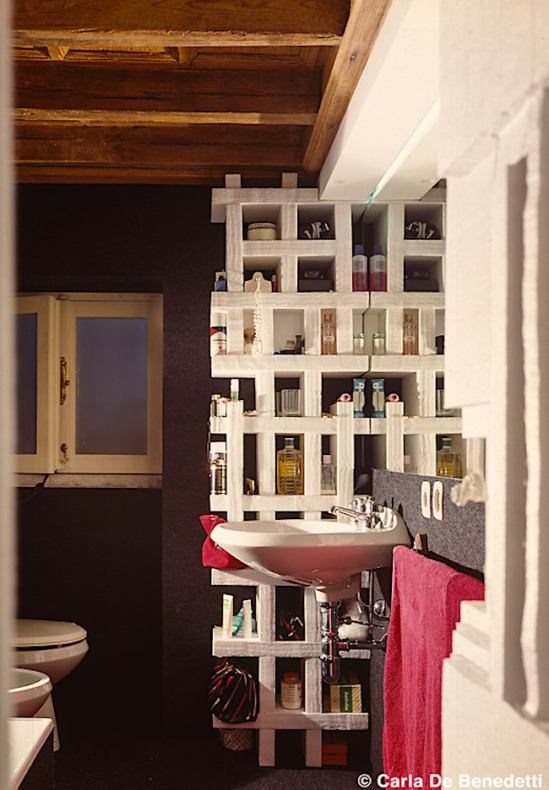
I wondered how he made them.
His work called to mind contemporary designer Max Lamb’s polystyrene furniture, notably the bookshelves he made for Calder Foundation Director, A.S.C. Rower.

…
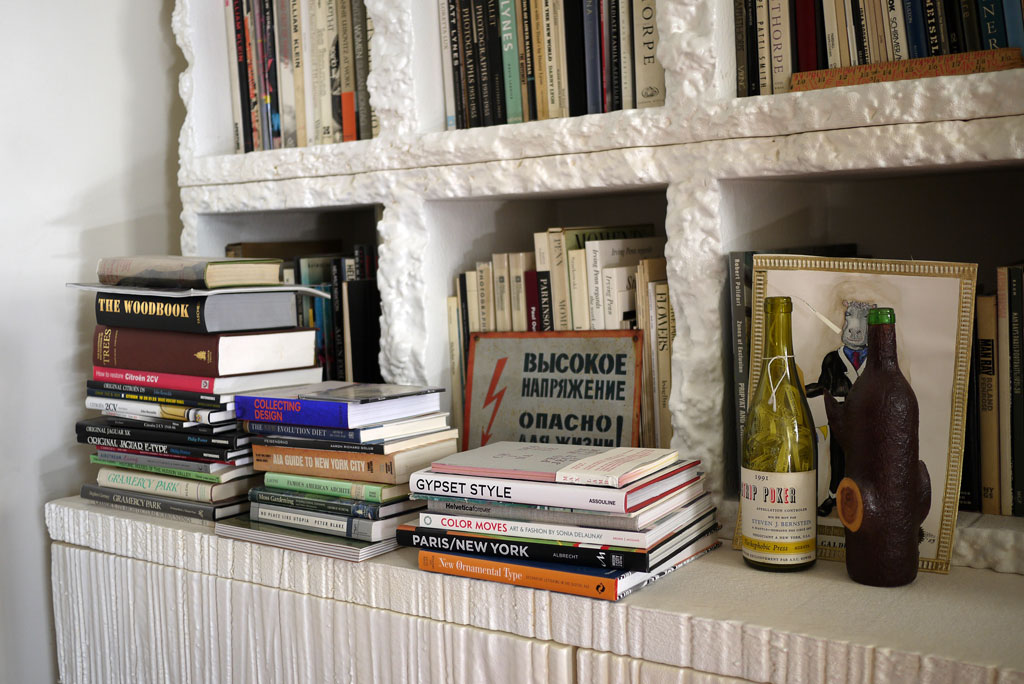
Since Lamb freely shares his process, I was able to understand the possibilities for working with polystyrene by looking closely at his videos and photographs. First lesson: Styrofoam can be sculpted with simple tools. Lamb carved a chair out of a block of the material using the back of a hammer.
He made a massive dining table and chairs by cutting polystyrene free-hand with an electric hot wire.
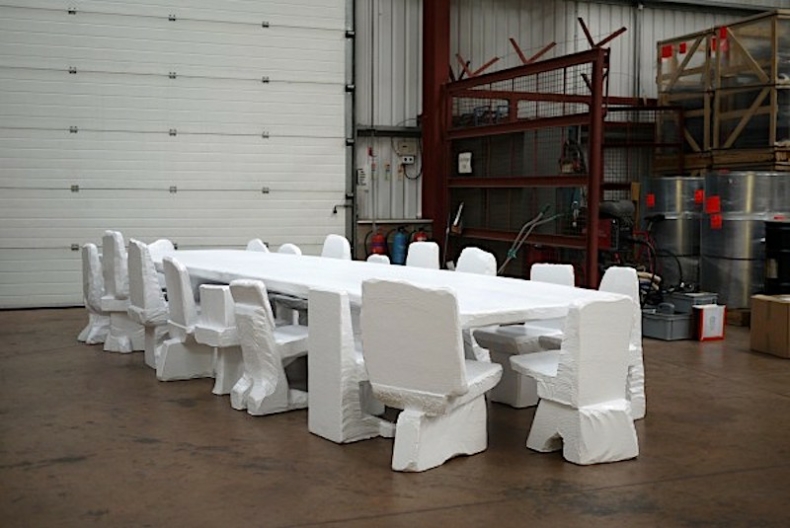
…

Hungry to know I COULD make things out of it if I wanted to, I searched where to get massive blocks of styrofoam: Universal Construction Foam will sell you blocks from 36 x 48 x 96-inches up to 4’ x 6’ x 24-feet.
Hot Wire Foam Factory sells materials, tools and glues more suited for smaller projects, with a ton of instructional videos.
Inspired by Schenal and Lamb, I’m designing and building with Styrofoam in my head as we speak, a fat, unmessy joy.
Note: Improvised Life Editor at Large David Saltman mentioned that years ago he interviewed the inventor of Styrofoam who said it was designed to be extremely strong, durable and recyclable. Unfortunately, it would eventually be mass-produced as a disposable material for packing and fast food containers. Because it doesn’t degrade, forms of it are banned in some states. If you are thinking of working with it, here’s an overview of how to recycle it. There’s a searchable map of EPS Recycling Locations here.
Related Posts


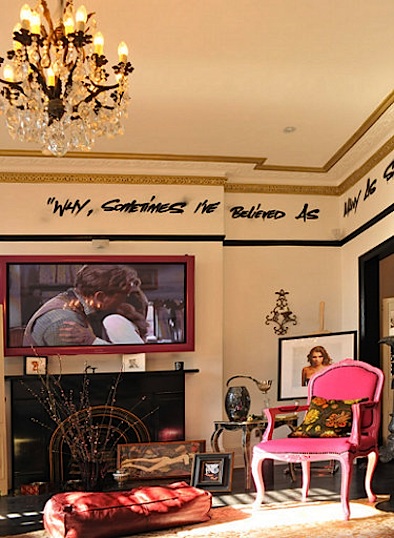


In our world of recycling EVERYTHING, this is a great tutorial for art students, engineers, construction workers and and anyone with a progressive and creative mind. I APPLAUD this post whole heartedly, since I recycle everything for any purpose (former art teacher).
Jan
In our world of recycling EVERYTHING, this is a great tutorial for art students, engineers, construction workers and and anyone with a progressive and creative mind. I APPLAUD this post whole heartedly, since I recycle everything for any purpose (former art teacher). I too, had a wire tool and a small budget.
Jan
Please be aware that Styrofoam is extremely flammable and emits carbon monoxide if burned. I would be wary about using it widely in the home.
Thanks so much for this valuable heads-up.